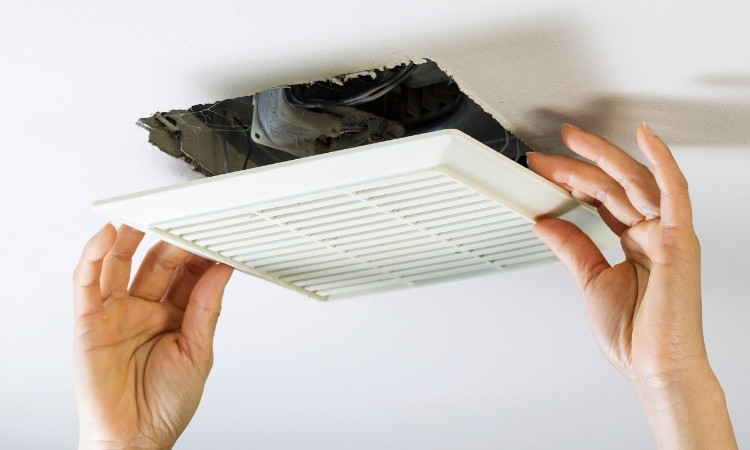If you’re planning to install a bathroom exhaust fan, you’re making a smart move. Bathrooms in Singapore get very humid, especially after showers. This trapped moisture can lead to mold, peeling paint, and bad smells. A good exhaust fan helps remove steam and keeps the air fresh. In small HDB flats and condos, ventilation is often limited, so installing a bathroom exhaust fan is important, but it is not optional.
This guide will show you how to install a bathroom exhaust fan in Singapore with clear, detailed steps. It’s written for homeowners who want to understand the process, whether you plan to DIY or hire help. LS Plumber Singapore also offers exposed copper pipe, instant water heater, and bathroom flood repair services in Singapore.
Why Singapore Bathrooms Need Exhaust Fans
Singapore has a tropical climate. It’s hot and humid all year. In many HDB and condo units, bathrooms are fully enclosed with no windows. This means the steam from your shower stays inside for hours. Over time, this can lead to mold growth on your ceiling and tiles. It also damages wooden cabinets and causes paint to bubble.
A bathroom exhaust fan installation pulls moist air out and vents it outside. This keeps your bathroom dry, reduces odours, and helps maintain your bathroom fixtures.
How to Install a Bathroom Exhaust Fan
1. Pick the Right Fan for Your Bathroom
In Singapore, most bathrooms are small. You don’t need a large or powerful fan. Choose one with a CFM (cubic feet per minute) rating between 50 and 90 for a standard HDB or condo bathroom. Look for these features:
- Quiet operation (under two sones is ideal)
- Backdraft damper (prevents hot outdoor air from entering)
- Energy-efficient motor
Brands like KDK, Panasonic, and Mistral are reliable and commonly sold in Singapore hardware stores.

2. Check Your Bathroom Layout
Look at your ceiling and see where the fan can be placed. For HDB units, some ceilings already have a duct opening. If your bathroom has a false ceiling, check above it for wiring and space. For condos, you may need to get approval from your MCST before making any changes.
The fan should be placed near the shower area but not directly above the water.
3. Cut an Opening for the Fan
Use the cardboard template that comes with the fan. Mark the area on the ceiling. Carefully cut a hole using a drywall cutter or a small saw. Make sure the hole is not too big. If you’re unsure, ask a handyman to assist.
For units with a concrete ceiling, wall-mounted fans are easier to install than ceiling fans.
4. Install the Fan Housing
Insert the fan housing into the opening. It must fit snugly. Secure it to the joist or ceiling structure using screws. If your ceiling is made of plasterboard, use toggle bolts or anchors. Do not leave the fan loose, as this can cause noise during operation.
5. Connect the Duct to the Outside
In Singapore, exhaust fans must vent outside, not into the ceiling. Use flexible aluminium ducting to connect the fan to the external wall. If you live in an HDB flat, there is usually a ventilation panel or opening already provided.
Seal the duct joints using aluminium foil tape. Make sure there are no leaks. The duct should be as short and straight as possible for better airflow.
6. Wire the Fan to a Power Source
Switch off the electricity before handling wires. Connect the fan wires to a power supply. The majority of users plug into the existing light switch, whereas some like to use their own separate switch. Have a licensed electrician take care of the wiring. This helps ensure safety and follows the electrical code in Singapore.
Once the wiring is complete, turn the power back on and test the fan.

7. Attach the Cover and Test the Fan
Finally, snap the fan cover into place. Turn it on to check if it works. You should feel air moving out through the vent. The fan should run quietly without any shaking or noise.
Tips for Installing a Toilet Exhaust Fan in Singapore
- If your toilet is separate from the main bathroom, a small wall-mounted fan is best.
- Make sure the fan comes with a backdraft shutter to block smells from outside.
- Choose a unit that fits the small wall space above the window or door.
Mistakes to Avoid
- Never vent the fan into the ceiling space. Always connect it to an outside vent.
- Don’t skip sealing the duct joints. Loose ducts reduce performance.
- Avoid using an oversized fan in a small bathroom. It will make more noise and consume more power.
Final Word
For your bathroom to stay clean, dry, and mold-free in Singapore’s humid weather, you must install a bathroom exhaust fan properly. Following the proper guidelines protects you no matter the type of home you live in.
If you’re unsure about the wiring or ducting, don’t take risks. Hire a trained handyman or electrician. A properly installed fan not only prevents damage but also keeps your bathroom air fresh every day.
